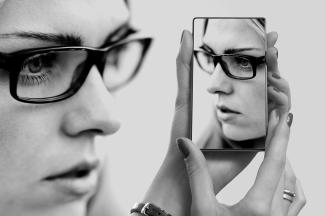The law on taking and sharing intimate images
Judith Thompson 01-09-2022
Due to the increased use of smartphones and social media platforms, staying connected has never been so easy. However, the increase in the availability of technology has created a new type of abuse and breach of privacy, which the law needs to catch up with.
Non-consensual taking and sharing of intimate images was one of three main issues that was highlighted by the Abusive and Offensive Online Communications Scoping Report (2018).
Currently in England and Wales there is no single criminal offence that governs the problem of non-consensual taking and sharing of images.
However, there are some offences that address elements of non-consensual taking and sharing of intimate images but many of these have inconsistencies.
Take for example the issue of "upskirting". Since 2019, it's been a criminal offence to take a picture under a person's clothing without them knowing with the intention of viewing their genitals or buttocks to obtain sexual gratification, or to cause upset to the victim. However, "downblousing" is not currently considered a criminal offence despite it being a clear example of non-consensual taking/sharing of intimate images.
In 2019 the Law Commission was asked to conduct an investigation surrounding taking intimate images and sharing them without consent and examined the laws that were existing. Recommendations were published on 7 July 2022.
Findings led to a recommendation of a tiered framework with one definition of an intimate image including a range of motivations and protective measures for victims.
This would include a base offence being the taking and sharing of intimate images without consent as well as more serious offences. These serious offences would then include the taking and sharing of intimate images without consent with the intention of causing humiliation, for obtaining sexual gratification or threatening to share such image. The installation of equipment for committing the act of taking the image would also be considered an offence.
Moreover, there would also be a clear definition of "intimate image". The Law Commission has suggested it would define an intimate image as either sexual, nude, partially nude or of toileting nature. This may seem like a broad term that could include images of a less private nature such as kissing. However, the Law Commission believes that such definition should exclude circumstances that are "ordinarily seen on a public street", enabling the law to focus on what the image shows rather than what the person was doing or wearing in the image.
Despite this effort, is it really enough? The proposed definition of "intimate image" and its limitations on what can count as an intimate image still leaves a few gaps. For example, an image of cleavage ordinarily shown in public would not be an offence. Problems may arise due to confusion regarding the broadness of what is ordinarily shown in public, what this means and how individuals and cultures may have a different view towards what is shown in public than others.
Furthermore, the idea that cleavage voluntarily shown, which is the subject of a picture that has been taken or shared, will not be an offence, contradicts the proposed definition of intimate image, by suggesting that the question of whether an image in intimate or not, depends on what the person is wearing.
This creates a question as to whether the alterations suggested will truly reflect societal changes surrounding consent and appropriate clothing. It is a step forward with many steps yet to follow.
If you have been affected by an intimate image taken without your consent, you may be able to bring a claim for damages for breach of privacy. Contact us today to find out how we can help.
Article credit: Emily Clemence

